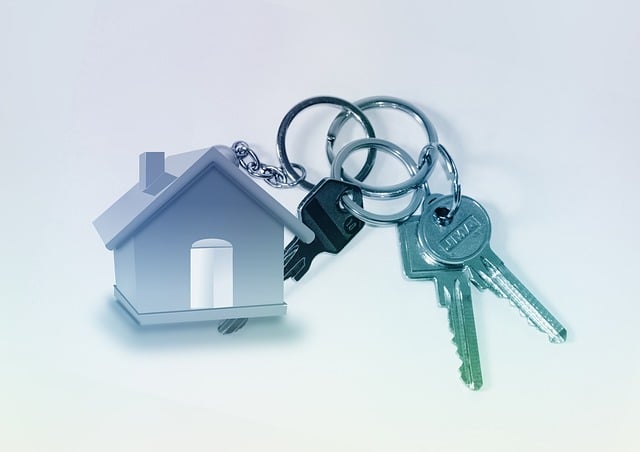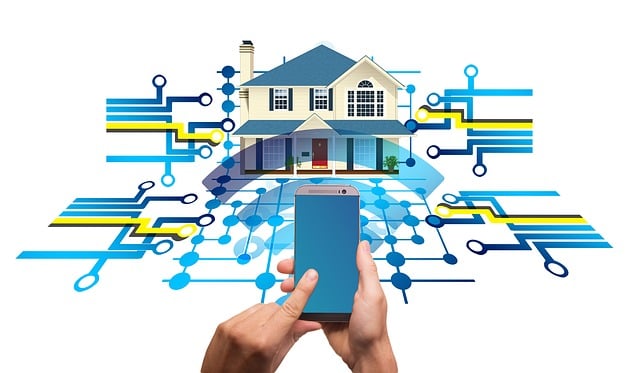Smart Home Control Systems
Energy-saving for smart homes
SEO for Beginners A Step-by-Step Guide
Smart home energy solutions
AI integration for smart home
Home automation technology
Natural Language Processing (NLP)
AI-driven Innovation
Remote Home Monitoring Devices
Human-Machine Collaboration
Benefits of Automating Your Home
Transitioning to a smart home control system can revolutionize the way you interact with your living space. Imagine being able to adjust the lighting, temperature, and security of your home with a simple voice command or a tap on your smartphone. This level of convenience and connectivity is what defines the essence of home automation. With the right smart home control system in place, you can create a personalized and responsive environment tailored to your lifestyle needs.
In addition to the convenience factor, automating your home can also lead to significant cost savings over time. By optimizing energy usage through smart thermostats, lighting controls, and appliance monitoring, you can effectively reduce your utility bills. Moreover, smart home control systems can enhance the security of your home by providing real-time monitoring and alerts for potential threats. The peace of mind that comes with knowing you can keep tabs on your home from anywhere adds an invaluable layer of security to your daily life.
How Smart Home Control Systems Work
Smart home control systems function through a network of connected devices that communicate wirelessly to ensure seamless automation within a home. These systems can be managed remotely via smartphones or tablets, enabling homeowners to control various functions such as lighting, heating, security cameras, and even kitchen appliances. By utilizing sensors, smart home control systems can detect changes in the environment, triggering specific actions based on pre-set conditions. For example, a smart thermostat can adjust the temperature automatically when it senses that no one is home, thus maximizing energy efficiency.
Integration is key to how smart home control systems operate efficiently. Through a central hub or control panel, different devices can be synchronized to work in harmony. This allows for the possibility of setting up routines or schedules for specific tasks, such as activating the lights and unlocking the door when you arrive home in the evening. Additionally, advancements in machine learning and artificial intelligence have enhanced the capabilities of smart home control systems, allowing them to learn user preferences over time and adapt their behavior accordingly.
Popular Brands for Smart Home Control Systems
When it comes to smart home control systems, there are several popular brands that stand out in the market. Companies like Google, Amazon, and Apple have established themselves as key players in the industry, offering a range of products that cater to different preferences and needs. Google’s Nest line of products, including the Nest Hub and Nest Thermostat, are known for their ease of use and seamless integration with other smart devices. Amazon’s Echo devices, powered by Alexa, have gained popularity for their voice control capabilities and extensive smart home compatibility. Apple’s HomeKit platform offers a secure and reliable ecosystem for controlling various smart home devices through its user-friendly interface.
On the other hand, smart home enthusiasts often turn to brands like Samsung SmartThings and Philips Hue for their wide range of smart home solutions. Samsung SmartThings provides a versatile platform that supports a variety of smart devices, allowing users to create customized automation routines. Philips Hue is renowned for its smart lighting products, offering users the ability to set the mood with customizable colors and brightness levels. With these popular brands leading the way, consumers have a plethora of options to choose from when looking to enhance their home with smart technology.
Key Features to Look for in Smart Home Control Systems
When selecting a smart home control system, it is essential to consider key features that will enhance your home automation experience. One important feature to look for is compatibility with various devices, ensuring seamless integration with your existing smart home gadgets. This interoperability allows you to control multiple devices from a single platform, streamlining your home automation process. Additionally, the ability to customize settings and create personalized routines is another crucial feature to consider. This feature enables you to tailor the system to fit your specific needs and preferences, allowing for a more personalized smart home experience.
Another key feature to prioritize in a smart home control system is remote access and monitoring capabilities. Opt for a system that allows you to control your devices and monitor your home from anywhere, providing you with peace of mind when you are away. The convenience of being able to adjust settings, receive alerts, and monitor security cameras remotely enhances the overall functionality of your smart home control system. Moreover, advanced security features such as encryption and two-factor authentication should also be on your checklist when choosing a smart home control system to ensure the protection of your data and privacy.
The Impact of Smart Home Control Systems on Energy Efficiency
Smart home control systems are revolutionizing the way we manage energy consumption in our homes. By integrating smart devices like thermostats, lighting controls, and energy monitors, homeowners can optimize their energy usage and reduce wastage. These systems allow for remote monitoring and control, enabling users to adjust settings based on their preferences and schedules, ultimately leading to significant energy savings.
One key benefit of smart home control systems is their ability to analyze energy usage patterns and provide insights on how to improve efficiency. By tracking energy consumption in real-time and identifying areas of high usage, homeowners can make informed decisions to reduce their carbon footprint and lower their utility bills. Additionally, the automation feature of these systems ensures that lights, heating, and cooling systems are only operational when needed, further contributing to enhanced energy efficiency.
• Smart home control systems allow for remote monitoring and control of devices
• Integration of smart devices like thermostats and lighting controls optimize energy usage
• Real-time tracking of energy consumption helps identify areas of high usage
• Automation feature ensures that devices are only operational when needed, reducing wastage
Enhancing Home Security with Smart Home Control Systems
When it comes to safeguarding your home and loved ones, smart home control systems provide advanced security features that offer peace of mind. With functionalities such as real-time monitoring, remote access to surveillance cameras, and customizable alerts for unusual activity, these systems enable homeowners to stay connected and in control even when away. By integrating smart locks, motion sensors, and smart lighting, homeowners can create a comprehensive security ecosystem that enhances the overall safety of their property.
Additionally, smart home control systems allow for seamless integration with third-party security devices, such as video doorbells and smart door locks, further fortifying the layers of protection around your home. These interconnected systems can be programmed to work in unison, triggering actions based on predetermined criteria set by the homeowner. For example, if a motion sensor detects movement at the front door, the smart lighting can be programmed to turn on automatically, while the homeowner receives a notification on their smartphone, enabling them to assess the situation remotely.
Integrating Smart Home Control Systems with Other Smart Devices
Smart home control systems offer a world of convenience and efficiency, but their true potential shines when integrated seamlessly with other smart devices. By connecting your smart lighting, thermostat, security cameras, and even kitchen appliances to a central control hub, you can create a cohesive ecosystem that responds to your every need. Imagine arriving home to your lights automatically turning on, your thermostat adjusting to the perfect temperature, and your favorite music playing softly in the background—all triggered by a single command or even your geolocation.
The beauty of integrating smart home control systems with other devices lies in the endless possibilities for customization and automation. You can set up routines that prepare your home for different times of the day or situations, such as a “Good Morning” routine that gradually wakes you up with gentle lighting and a fresh pot of coffee brewing. Furthermore, by linking your smart devices, you can create a responsive environment that adapts to your preferences and lifestyle without you having to lift a finger. The synergy between different smart devices not only enhances your daily routines but also elevates the overall functionality of your home.
Cost Considerations for Installing Smart Home Control Systems
As you explore the realm of smart home control systems, cost considerations play a crucial role in deciding the extent of automation you desire. The initial investment in smart home technology can vary widely depending on the brand, features, and scale of integration you opt for. It is essential to set a budget based on your requirements and prioritize the functionalities that align with your lifestyle and needs. Keep in mind that while there may be an upfront cost, the long-term savings in energy efficiency and potential increase in home security can offset the initial investment.
Aside from the cost of purchasing the smart home control system itself, consider additional expenses such as installation costs, subscription fees for certain services, and potential maintenance fees. Some brands offer DIY installation options to cut down on installation expenses, while others may require professional installation for optimal functionality. It is also worth researching any ongoing costs associated with software updates or compatibility with new devices to ensure that your smart home control system remains up to date and operational in the long run. By factoring in these various costs from the outset, you can make an informed decision that suits both your budget and your home automation aspirations.
Customizing Your Smart Home Control System to Fit Your Lifestyle
Creating a personalized smart home control system that aligns with your lifestyle is crucial for maximizing its benefits. Tailoring your system to suit your preferences and routines ensures that it functions seamlessly within your daily life. By customizing your smart home control system, you can automate tasks like adjusting lighting, setting the thermostat, or even playing music with simple voice commands or a tap on your smartphone.
Consider your daily habits and needs when customizing your smart home control system. For instance, if you are an early riser who enjoys waking up to natural light, you can program your smart lights to gradually brighten at a specific time each morning. Or if you frequently entertain guests, you can create customized lighting scenes to set the ambiance for dinner parties or movie nights. Additionally, integrating compatible smart devices like thermostats, security cameras, or door locks can further enhance the functionality and convenience of your customized system.
The Future of Smart Home Control Systems
The evolution of smart home control systems is set to continue at a rapid pace, with advancements in artificial intelligence and machine learning driving innovation. In the future, we can expect these systems to become even more intuitive and predictive, learning from our habits and preferences to anticipate our needs before we even realize them ourselves. Imagine a home that adjusts its temperature, lighting, and security settings automatically based on your daily routine and personal preferences, without you having to lift a finger.
Furthermore, smart home control systems are likely to become even more interconnected with other smart devices and appliances, creating a seamless and integrated ecosystem within the home. We can expect to see increased interoperability between different brands and products, allowing for greater customization and personalization of the smart home experience. The future holds immense potential for smart homes to truly become the cornerstone of modern living, offering unparalleled convenience, comfort, and efficiency for homeowners.
Common Misconceptions About Smart Home Control Systems
While smart home control systems offer convenience and efficiency, there are some common misconceptions surrounding their use. One prevalent myth is that smart home control systems are too complex to install and operate. In reality, many popular smart home brands offer user-friendly setups and interfaces that make it easy for homeowners to take advantage of the technology without extensive technical expertise.
Another misconception is that smart home control systems are only for tech-savvy individuals with advanced knowledge of automation. However, most smart home devices are designed to be intuitive and accessible to users of all technological backgrounds. Whether you’re looking to enhance your home security or improve energy efficiency, there are smart home control systems available that cater to a wide range of needs and preferences.
Troubleshooting Common Issues with Smart Home Control Systems
Smart home control systems have revolutionized the way we interact with our living spaces, but like any technological advancement, they can encounter hiccups along the way. Users may face issues such as connectivity problems, where devices fail to communicate with each other, or software glitches causing malfunctions in the system’s operation. To address connectivity issues, ensure that all devices are within range of the central hub and that there are no physical obstructions obstructing the signal. Updating software and firmware regularly can also help resolve compatibility issues that may arise.
Another common problem users might encounter is voice command misinterpretation, where the system fails to accurately understand and execute verbal instructions. This can be frustrating but can often be rectified by training the system to recognize your voice better or by enunciating more clearly. In cases where the system repeatedly misunderstands commands, recalibrating the voice recognition settings or resetting the system to default settings may be necessary. By troubleshooting these common issues with patience and persistence, users can ensure a smooth and efficient experience with their smart home control system.
Maximizing the Benefits of Your Smart Home Control System
To fully capitalize on the advantages of your smart home control system, it’s essential to establish a comprehensive routine for its usage. By integrating your daily tasks with the system, such as setting automated schedules for lighting, temperature control, and security features, you can streamline your home management significantly. Leveraging the power of voice commands or smartphone applications also enhances accessibility and convenience in controlling your smart home devices.
Moreover, exploring advanced features and functionalities of your smart home control system can unlock a whole new level of efficiency and comfort. Experimenting with integration options for different devices, such as smart thermostats, cameras, and entertainment systems, can lead to a more cohesive and interconnected living environment. Regular updates and maintenance of the system ensure optimal performance and facilitate the smooth operation of your smart home technology.








